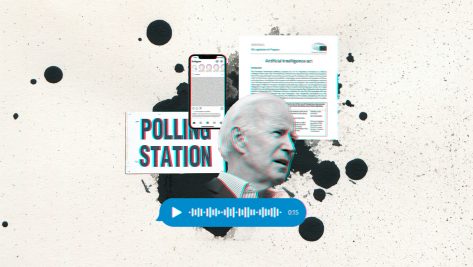We have a tendency to overestimate the impact of something in the short term, especially when it has the possibility of changing the way we work and live. This is particularly the case today with innovative technology because these new developments tend to create high expectations that often fail to deliver.
Blockchain is an excellent example of this. Back in 2017, it seemed that the technology was going to disrupt essentially every single industry – and do so rather quickly. However, five years later, it can be safely said that although the blockchain space has grown impressively, it has – at least for the time being – fallen short of initial expectations.
The reason for this apparent underperformance on the initial expectations of blockchain technology seems to be that, even though a connection could be made between blockchain-related technologies and a given industry, it does not mean that they were a good fit. This seems to be what has happened in the international arbitration community, where there has been for some time a lot of hype regarding the possibilities that may come from the connection between blockchain technology – and in particular, cryptoassets – and international arbitration, but, so far, these expectations have not yet translated into many concrete examples of how these two worlds can intertwine.
There can be many reasons to explain why the crypto industry and international arbitration have not yet met some initial expectations. However, it is necessary to separate the weeds from the flowers in order to properly answer the question: is there really something between cryptoassets and international arbitration? First, we must find common ground regarding the issues to discuss. Note that the term ‘cryptoasset’ is not interchangeable with cryptocurrency. For, just as the word ‘art’ can mean many different things (paintings, sculptures, or even taping a banana to a wall), cryptoassets can encompass many different types of assets including, but not limited to, cryptocurrencies. Therefore, it’s important to consider what cryptoassets essentially are, then what are the different types, and finally how they can intertwine with international arbitration.
When referring to cryptoassets, we are actually talking about digital assets or digitized assets. Digital assets are those that only exist in the digital world, for example Bitcoin. Digitized assets are those that exist in the physical world, but have been recorded in a digital format, such as a deed to a house recorded in a digital public registry. These classes of assets are referred to as tokens when recorded in a blockchain, which is, basically, a way to store or transact information without depending on third parties.
Blockchains operate thanks to tens, hundreds, even thousands of computers running the same software simultaneously, depending on the blockchain that is being used. In very simplistic terms, this process of operating a blockchain to store and record transactions is called mining. Mining uses a lot of electricity because it requires many (i.e. thousands) of computers running simultaneously and continuously. Bitcoin currently consumes around 120 terawatts of electricity per year, which is close to the same amount of energy used by the entire country of Sweden (with a population of 10.3 million) or Argentina (44.9 million.)
So, what are the different types of cryptoassets? This is, in fact, a loaded question because the crypto community is so young and has grown so quickly that regulators have fallen behind. Different countries regulate cryptoassets differently and there is no consensus even as to what are the various types of cryptoassets. Luckily, though, there is some agreement in the crypto community and it is that there are at least four types of cryptoassets: payment tokens (cryptocurrencies), utility tokens, asset tokens, and non-fungible tokens. This is relevant to understand in regards to the legal world because all these tokens have different legal natures – which means that they might all be regulated differently – and thus, may have a different impact on international arbitration.
But how exactly can cryptoassets intersect with international arbitration? This too is more complicated than it seems given that the types of potential international arbitration disputes concerning cryptoassets are quite different depending on whether they involve commercial or investment arbitrations.
The Binance dispute – in which an investor has claimed that Binance’s automated liquidation system forced them to sell, against their own interests, large amounts of a specific coin – is a prime example of a commercial arbitration regarding cryptoassets. From this dispute, we can clearly foresee that the questions raised in cryptoasset-related commercial arbitrations will unlikely have anything to do with the legal nature of the cryptoasset and will thus be solvable with already existing legal tools.
In other words, even though cryptoassets are in fact disruptive and innovative technologies, the types of questions that will be raised in commercial arbitrations relating to cryptoassets will likely be solvable using existing laws, rules, or soft law instruments. Thus, new resources will not necessarily be needed to appropriately address and solve the questions raised in commercial disputes involving cryptoassets.
It is a real possibility that cryptoassets may create new standards in investment disputes.
This is not necessarily the case for investment arbitration, which asks broader, and yet more nuanced questions (for example, what constitutes an investment or who is a protected investor) that don’t necessarily have an answer at this time in regards to cryptoassets or crypto-related activities. Therefore, cryptoassets will likely give rise to investment disputes that will force tribunals to create new standards under international law and push states to redefine their domestic laws. El Salvador is a case in point.
President Nayib Bukele pushed for the country to adopt Bitcoin as legal tender, which it did in September of last year, and has put out the call to investors to mine Bitcoin and cryptocurrencies in El Salvador. Recently Bukele shared illustrations and models of a coastal smart city known as Bitcoin City that will be based fully on the use of bitcoin as a cryptocurrency. Bukele has stated he will finance the construction of Bitcoin City by issuing sovereign bonds – but let’s imagine that, rather than issuing sovereign bonds through traditional means, El Salvador does so by issuing an asset token (which has a similar utility and purpose to a traditional bond.)
In this case, if El Salvador defaults on paying investors under the terms of the asset token, then an investment tribunal may be faced with the question as to whether or not an asset token is a protected investment under international law. As mentioned, regulators are not keeping pace with the growth of the crypto industry and so many – I would even say most – countries have no domestic laws that define what an asset token is. Therefore, it would be the investment tribunals that would likely have to answer the question of the legal nature of asset tokens and whether or not they constitute protected investments – and they would have to do so without much help or guidance from domestic laws.
Another example of an investment dispute relating to cryptoassets relates to the mining of cryptocurrencies. Staying with the example of El Salvador, imagine that a law is passed in the country with the aim of promoting mining investments within El Salvador – and that this law and the declarations coming from the president cause mining investments to start pouring into El Salvador.
Now let’s take this hypothetical situation a step further. Five years down the line, a new government assumes power in El Salvador, one that repeals the law, arguing that mining is hazardous to the environment and contributes to global warming. This would, essentially, render all the investments in El Salvador’s mining worthless and potentially lead to investment disputes. In this case, investment tribunals would have to determine whether investments in mining constitute a protected investment.
While the issue may seem straightforward (the investment being the facility and the equipment used to mine, a warehouse and its computers), public policy questions lie underneath. Does mining harm the environment in a way that has an impact on global warming, and if so, can it become a public policy issue for states to take action against activities that harm the environment and contribute to global warming? Given the amount of energy that mining consumes – and with only around 39% of that coming from renewable sources – it does not seem far-fetched to say that the climate crisis may soon become a public policy issue for some states and that banning activities that are hazardous to the environment, such as mining, will likewise become an issue of public policy under public international law.
It is a real possibility that cryptoassets may create new standards in investment disputes, especially as the regulation catches up with the technology – as it will likely be forced to do. The Binance dispute and the example of El Salvador show us that cryptoassets and international arbitration can potentially intertwine because the industry is growing at lightning speed. When these two do collide, which will likely happen sooner rather than later, the legal world may learn it wasn’t all hype after all.
© IE Insights.











